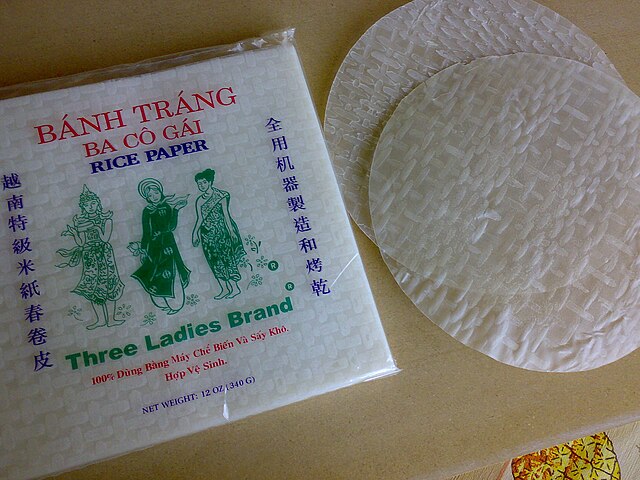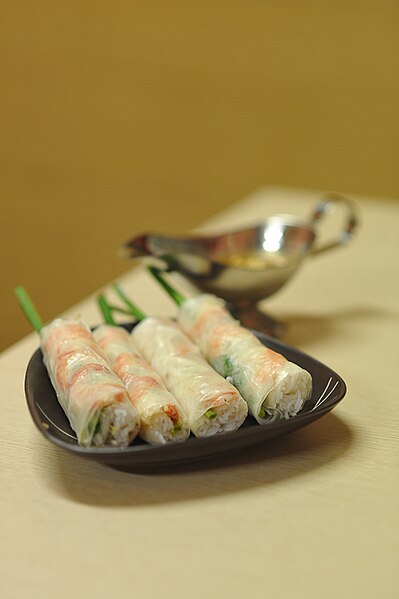Rice paper is a product constructed of paper-like materials made from different plants. These include:Thin peeled dried pith of Tetrapanax papyrifer: A sheet-like "paper" material was used extensively in late 19th century Guangdong, China as a common support medium for gouache paintings sold to Western clients of the era. The term was first defined in the Chinese–English Dictionary of Robert Morrison who referred to the use of the Chinese medicinal plant as material for painting, as well as for making artificial flowers and shoe soles.
Xuan paper made from paper mulberry: The traditional paper which originated in ancient China and it has been used for centuries in China, Japan, Korea, and Vietnam for writing, artwork, and architecture.
Various pulp-based papers: May be made from the rice straw or other plants, such as hemp and bamboo.
Dried starch sheets of various thickness or texture: These edible paper sheets have some properties of pulp paper and can be made from rice starch. They are known as bánh tráng, used in Vietnamese cuisine.

Rice paper
Gỏi cuốn, nem cuốn, salad roll, summer roll, fresh spring roll, or rice paper roll is a Vietnamese dish traditionally consisting of pork, prawn, vegetables, bún, and other ingredients wrapped in bánh tráng. Unlike other spring roll dishes, which are believed to originate from China, Vietnamese gỏi cuốn is a national creation using bánh tráng.
Gỏi cuốn wrapped in Vietnamese bánh tráng
Gỏi cuốn with accompaniments: tương and fresh chili
A plate of gỏi cuốn
Vegetarian gỏi cuốn filled with vegetables and dipped in tương





